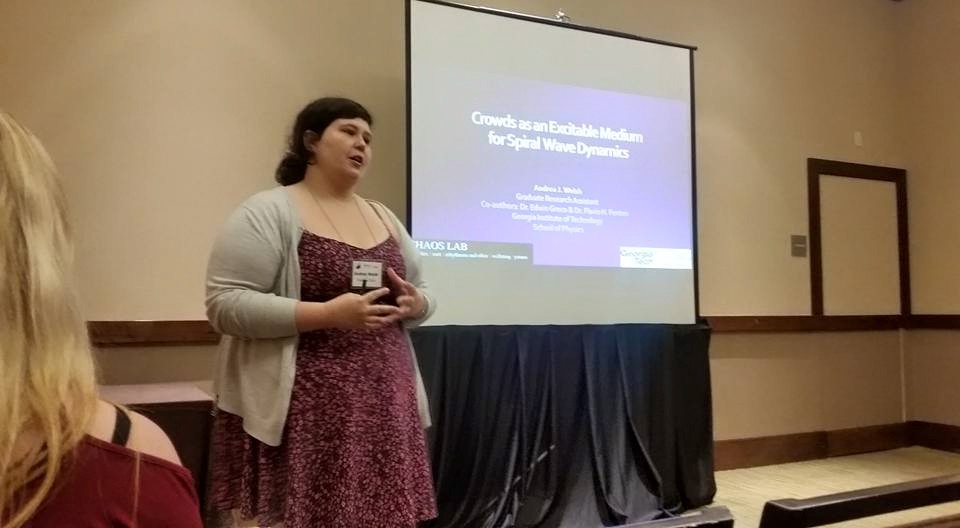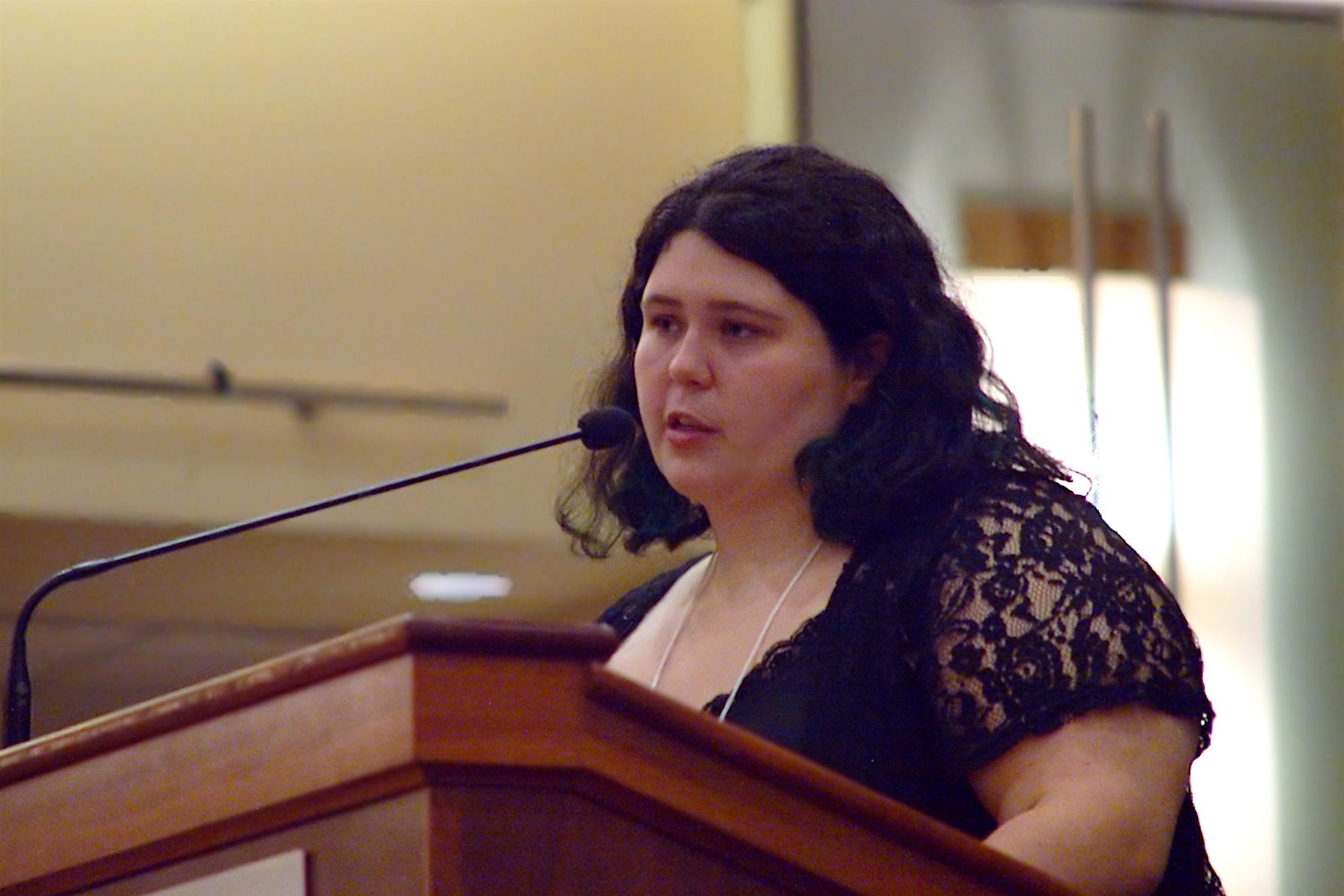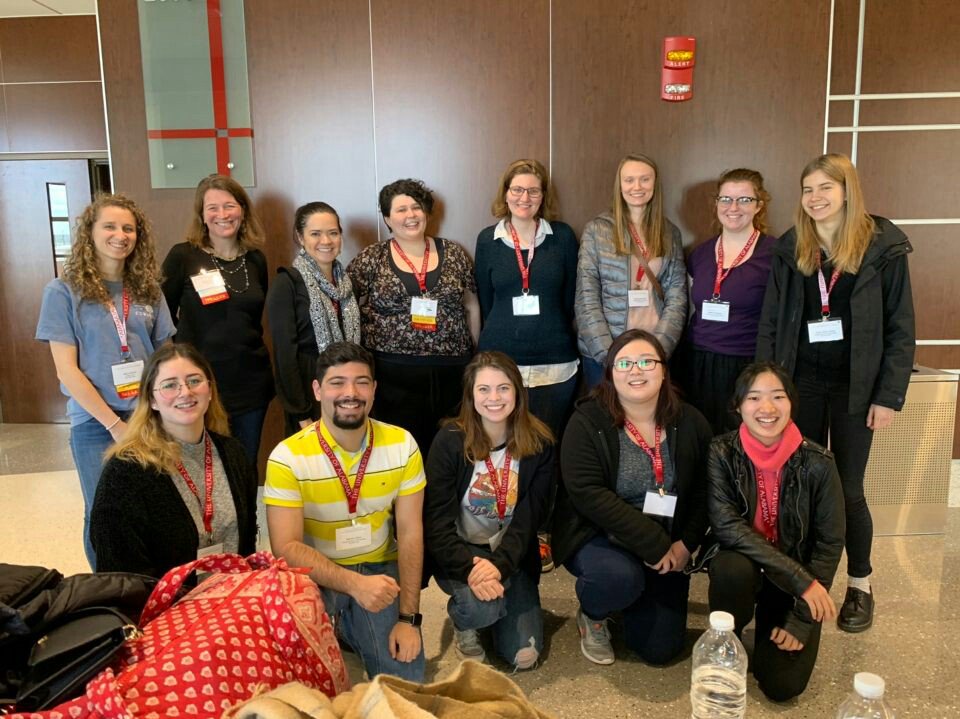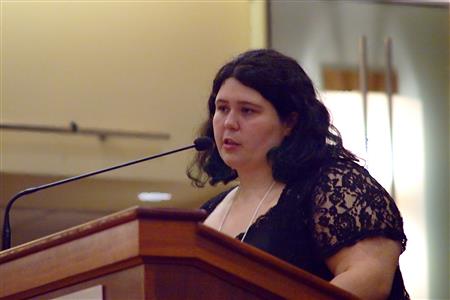oSTEM’s Diversity and Inclusion team strives to increase representation of our underserved members through Rising Stars. In this edition, we introduce Andrea Welsh (she/her/hers). Andrea identifies as a bi woman with depression and anxiety. She is a seventh year PhD candidate at Georgia Institute of Technology, studying biophysical systems. After starting her program with <9% women in her department, Andrea has dedicated much of her personal time to increasing diversity there and within physics as a whole. Andrea’s first year experiences gave her a passion to improve the mental health of graduate students.

Q: Can you share a little about your graduate research?
A: I really enjoy this idea of how small interactions can make something bigger (like a butterfly flapping its wings and causing greater changes). One thing that we study is systems that oscillate and the heart is a core system. How do your cells oscillate with different chemicals and voltages in them, and how do they interact with each other to coordinate the overall goal of the heart to beat and pump blood, and be healthy?
We want to work with tech companies, medical companies, and engineering departments to develop new technology...so that when a heart attack happens the normal motion of the heart can be restarted.
Q: It sounds like you’ve come into your own as a researcher! You also have shared about your passion for promoting mental health among graduate students. How did your experience lend to your passions?
A: When I started grad school I had had a big falling out with my family at the time. My mental health had been bad since about high school, but when I got to grad school, it was the lowest. I was completely isolated from my family and restarting in a new department, and grad school is pretty stressful. I had a lot of questions of whether, for someone with depression, academia is even possible. There were times when I couldn’t get out of bed, or was unable to work. Everyone in grad school and academia cares about productivity. I knew that constantly working wouldn’t be sustainable for me, and I started learning that I wasn’t the only one that was having those experiences.

Q: How did you learn that you were not alone?
A: I started this women in physics group and started talking to some of the undergrads who had some of the same experiences. I shared about my anxiety about giving talks, asking questions, feeling stupid, and feeling like a failure. As I started to talk openly about my mental health, I realized how helpful it was for me and also for other people to have someone that they could engage with.
Q: What is an example of unwelcoming feedback you received in academia?
I was told by other grad students and professors, “This is just what grad school is like. You just have to finish it and get through it, or maybe you just don’t belong in academia.”
I thought, “This can’t be the case. If this is so miserable for everybody in academia, why are we all doing it? If there is something systematically wrong, there must be ways we can fix it. It can’t just be ‘putting up and dealing with it.’”

Q: How do you respond when people say you do not belong?
A: I feel that someone with mental health challenges definitely belongs in academia. It took me a while to acknowledge my invisible disability. This work is something that I am interested in and I want to do.
I train faculty and departments to make academia more accessible. I teach them triggers like telling students they shouldn't be there or making jokes about how easily they'll fail and I train them to how to create more inclusive learning environments.
Q: What are some of the tips you share with academics?
A: During orientations, make sure that departments bring up mental health and campus resources. Bring someone in from the counseling center. We now require that in our department. We also are developing a best practices guide and a training similar to Safe Space, so that faculty and staff can learn about how some of their behaviors trigger students and things that they can do to be more aware and inclusive.

Q: How did you bring this conversation of mental health to the broader physics community?
A: After leading a student session at the American Physical Society and after going to a mental health session at oSTEM in 2016, I contacted Physics Today. I thought, “We can start having these conversations in my professional society.” I already know that physics has a problem with diversity in general and mental health is a part of the diversity that I’m passionate about.
The editors at Physics Today were really happy with the idea. I wanted people to see that somebody you wouldn’t know has depression, or anxiety, or PTSD, or ADHD is sitting around you in your office right now. They might be suffering from their illness. They need to be acknowledged and they need support. I wrote about what other communities are doing to discuss mental health. The article allowed me to form a group of people to discuss what different departments are doing to support mental health.
A lot of these conversations come up in oSTEM first. I think there’s a strong mix of community in science that I don’t usually get in my workplace and it’s nice to have a place where people recognize they aren’t alone.
Q: How was your article received?
A: There are faculty who have reached out to me and said, “Wow, I’m here if you ever need to talk”. That was great because I never knew where it was safe to talk. Hearing faculty say that they wanted to know what could be done confirmed that there is space for us and we just need to find that place and take it.

Q: We can’t let you go before talking about your efforts to increase the number of women in Physics!
A: When I started at Georgia Tech, only about 1/9 of the incoming class were women. That blew my mind. My first goal was to get us all together and say “We exist. We’re here!” From there, we gained a lot of momentum to figure out why women were leaving and to find mentors for women that we have. We also are intentionally increasing recruitment efforts for women and minorities to our program, we got rid of the Physics GRE requirement because it shows bias against women and minorities, and we are inviting more women and minority speakers to colloquia. Our most recent incoming class had about 45% women.
In a short four years, Andrea has revolutionized the diversity of her program and is making great strides for diversity in physics. Andrea, we thank you for working so hard to create space!
You can join Andrea’s Google group “Mental Health in Physics” (expanding to include other research fields) that includes students, postdocs, faculty, and non-academics. Find Andrea on Twitter @theoreticalwzrd.


